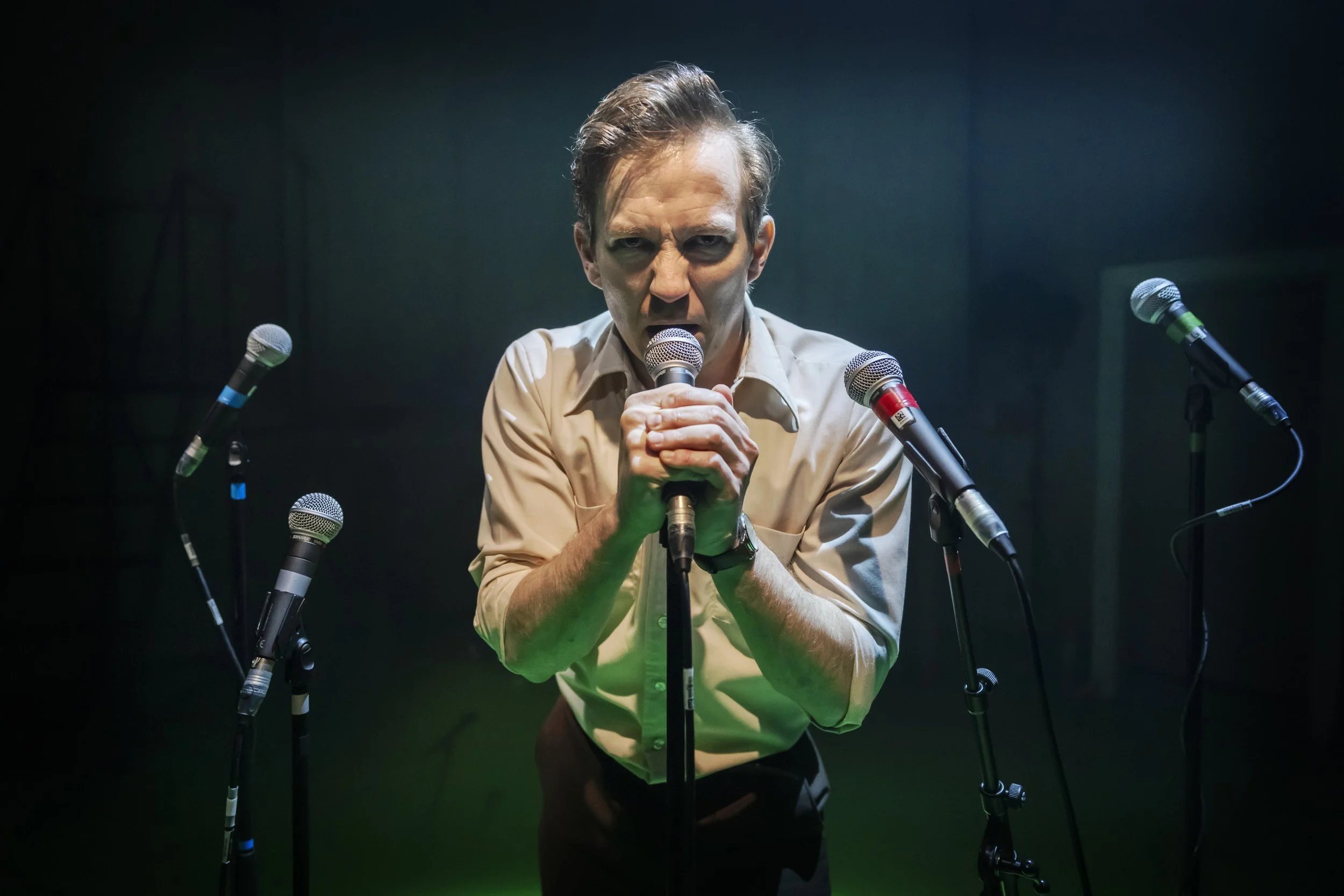Sunny Side by Northern Rascals Review
Sunny Side, Northern Rascals. Photo by Elly Welford
Written by Cathie for Theatre & Tonic
Disclaimer: Gifted tickets in exchange for an honest review
This show contains haze and flashing lights and explores sensitive and potentially distressing topics related to mental health
On a beautifully sunny spring day at the Place, theatre company Northern Rascals present a new show, Sunny Side, which focuses on male mental health. Playwright Anna Holmes introduces us to “K”, an 18 year old from the “happy valley” in Yorkshire, a part of “God’s Own Country”. K is struggling in an endless cycle of eat, sleep, work, with lessening returns every time he forces himself out of bed. K (Soul Roberts) is clearly tormented and feeling lost after leaving school. We do not see his family but hear their garbled arguments through the door, where the only clear phrase of “he needs to man up” resounds with painful condemnation by an elder male figure.
K’s struggles with his mental health are greatly lifted when he meets “Danny” (Ed Mitchell), an elder brother or friend figure who has returned from university to see K at Christmas. Their ease together is a profound 180 from K’s original struggles, and the positive impact of this connection is clear and contrasting. Danny is moving on and growing into the next steps of his life while K is stagnating in the Valley. At the end of the piece, K visits Danny on a uni night out and the two implode in a struggle of despair, chaos and connection as the two try to help each other in a moment of mental crisis. In contrast to this purely male interaction, we also meet Sophie Thomas, who plays multiple women in the night club, an imaginary girlfriend for K and a passing stranger at the wrong moment to encourage K’s realisation of his emotional implosion.
The dancing is pure contemporary magic, flowing with the lyrical poetry in a way which feels timeless yet also extremely modern. The trio of dancers (Soul Roberts, Ed Mitchell, Sophie Thomas) all move in unique forms which seamlessly connect together and separate in an endless chain of emotional connection and separation. They are mesmerising to watch and truly commit 100% to their roles. All of the dancing is in response to and echoes the narration provided by Lamin Touray, Jonny Aubrey Bentley and Brendan Barclay. Each speaks in highly lyrical poetry which feels fluid and dynamic at the same time. The prose is incredibly powerful and invokes great pathos in the audience towards the plight of these lost characters.
The themes of this show, at first glance, seem to only focus on male adolescent mental health. However, upon closer look, it becomes clear that gentrification and the decaying of opportunities for the young in the countryside also contribute to the darkly fragile state K winds up in. As much as his connection with Danny represents a metaphor of life, the isolation and ending by the canal represents death and change between childhood and adulthood, school and work life and struggles to shift into full independence while maintaining connections with others. The pallor of isolation is such a clear theme of yearning for the touch as connection with others, and adds another sharp layer of intimacy, as this play was written initially in lockdown, where we couldn’t be with others unless behind a screen.
Caitlin Mawhinney’s set design acts as an excellent fourth character in a decrepit bedroom situated below the valley flood lines, characterised by decaying concrete walls. The set emanates desperation, fear, and the isolation of the mind as K increasingly withdraws from the world around him. The lighting design by Barnaby Booth and the efforts of composer Wilfred Kimber contribute significantly to the texture and layered longing of the piece in a highly effective manner. Digital artist Aaron Howell's use of CGI to depict the memories playing through K’s mind, as well as the atmosphere of the club, adds another vivid element to the solitude resonating across the stage. At 85 minutes, this show is slightly too long but does an admirable job of slowly building the pace and tension into a resounding conclusion.
This show was written with support from Andy’s Man Club. They are a mental health charity which focuses on supporting men’s mental health and providing safe spaces to seek discussion and help when needed. If any men are reading this review who feel they need such support, the information can be found at the bottom of this review.
This show is not the easiest of watches but the trio of dance artists are absolutely phenomenal at wringing every ounce of pathos out of the piece possible. Sunny Side is a very timely reflection on male mental health and highlights the struggles that so many young men face universally. It’s clear themes of isolation, seeking healthy male friendships and peer-based solidarity are clear and invigorating. I urge any person from 16-80 to watch this show as its message needs to be heard by all. If you enjoy shows which focus on the impact of gentrification, the isolation of young men in society and the importance of healthy social connections and community for the young, told in beautifully fluid poetry, then this is the show for you.
★★★★
















